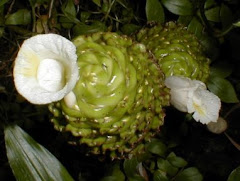 BOTANICAL DESCRIPTION
BOTANICAL DESCRIPTIONZ.officinale is a knotted, thick, an erect and aromatic herb with branched underground stem called rhizome which can grow from year to year if the rhizomes are left in the ground; bears seed very rarely.
GEOGRAPHICAL DISTRIBUTION
The plant is widely cultivated all over India, Bangladesh, Taiwan, Jamaica and Nigeria.
CLIMATE
Ginger can be grown in any place in the country and it grows in warm climate. It grows well from sea level to an elevation of 1500 meters. Optimum elevation is from 300-900 meters above sea level. Growth diminishes at a much higher elevations.
Ginger requires a relatively high temperature and relative humidity. Optimum temperature for its growth is between 25 to 30 ˚C. Temperature higher than 35 ˚C will cause leaf scorching. Optimum annual rainfall for a successful ginger production is 200-300cm while ginger could be raised.
SOIL
Ginger grows in fertile, moist, tropical soil and can be planted on rich, well drained loam.
POLLINATION
Pollination has only been observed in a few spesies of Zingeberaceae, but butterflies and moths seem to play a major role. Ants and bees have been seen to visit several Amomum and Alpinia species, and may be pollinating agents.































































No comments:
Post a Comment